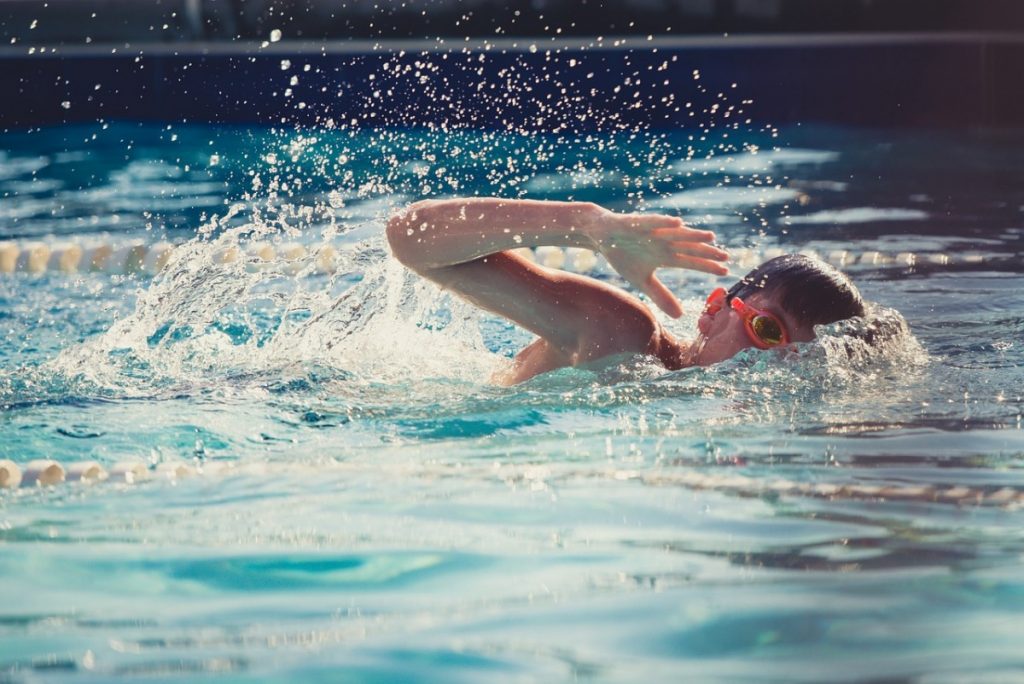
Swimming is an excellent form of exercise because it’s low-impact, but even overuse of muscles in swimming can result in injuries. Don’t let this deter you from getting in the pool for a workout! With proper form, strength training, warm-up and rest, swimming injuries can be easily prevented.
Types of swimming injuries
Shoulder pain. This is the most common type of injury among swimmers and has been termed “swimmer’s shoulder.” The repetitive stroke motion can cause shoulder problems, particularly if the swimmer has suddenly ramped up activity or does not have correct swimming form. Shoulders may experience inflammation, or in more serious cases, rotator cuff tendonitis or tears.
First and foremost, it’s important for swimmers to pay attention to form, which affects performance and muscle use. For shoulders, focus on to how you rotate your body as you breathe, to make sure you’re not overreaching an arm mid-stroke. To prevent shoulder pain, limit the amount of kickboard work (in which your arms are stretched overhead for a long period of time) and don’t overwork tired shoulder muscles. At night, taking pressure off your shoulders while sleeping will help ease a lot of pain. Make sure to sleep on your back, which helps put your neck and shoulders in alignment, and avoid being tempted to place your arm under your pillow in a curled-up, side position.
Lastly, strengthen the shoulders with various exercises, including your scapular area (also known as the shoulder blades). At the gym, do standing row exercises with a cable machine or even a stretchy exercise band.
Neck pain. Neck injury from swimming occurs often as well due to constant turning of the head to breathe. Bringing the head up out of the water, or turning too far (where you are looking at the sky instead of to the side) are common ways of straining the neck.
Make sure to practice proper breathing technique if you’re suffering from neck pain. Try to keep your head aligned with your spine at all times. If you’re feeling any pain or tingling, take a break and work with a swim coach to make sure your alignment is correct.
Knee pain. Swimmers may experience knee issues from kicking in breaststroke. This is because the breaststroke requires external rotation of the knees, which is not a typical movement. The inner ligament of the knee, called the medial collateral ligament, is stressed as a result of the knee rotation to perform the kick.
What can be done to prevent knee injury while swimming? Spend extra time warming up the knees before you get into the pool. When strength training, make sure to incorporate exercises that work the thighs and muscles surrounding the knees to build more support. Lastly, mix up the strokes – don’t spend the whole time only doing breast stroke. Change strokes regularly so you give your knees a rest.
As with any other sport, it’s important not to leap directly into heavy activity. Spend more time focusing on form rather than on reps, while slowly building up your workout. Work with a trainer who can make sure your stroke is correct, so you’re not injuring your shoulders and arms unnecessarily. And, as always, warm up before getting into the pool and let your muscles rest to avoid overworking them. If your pain continues, see a physiatrist or physical therapist for help and treatment.
